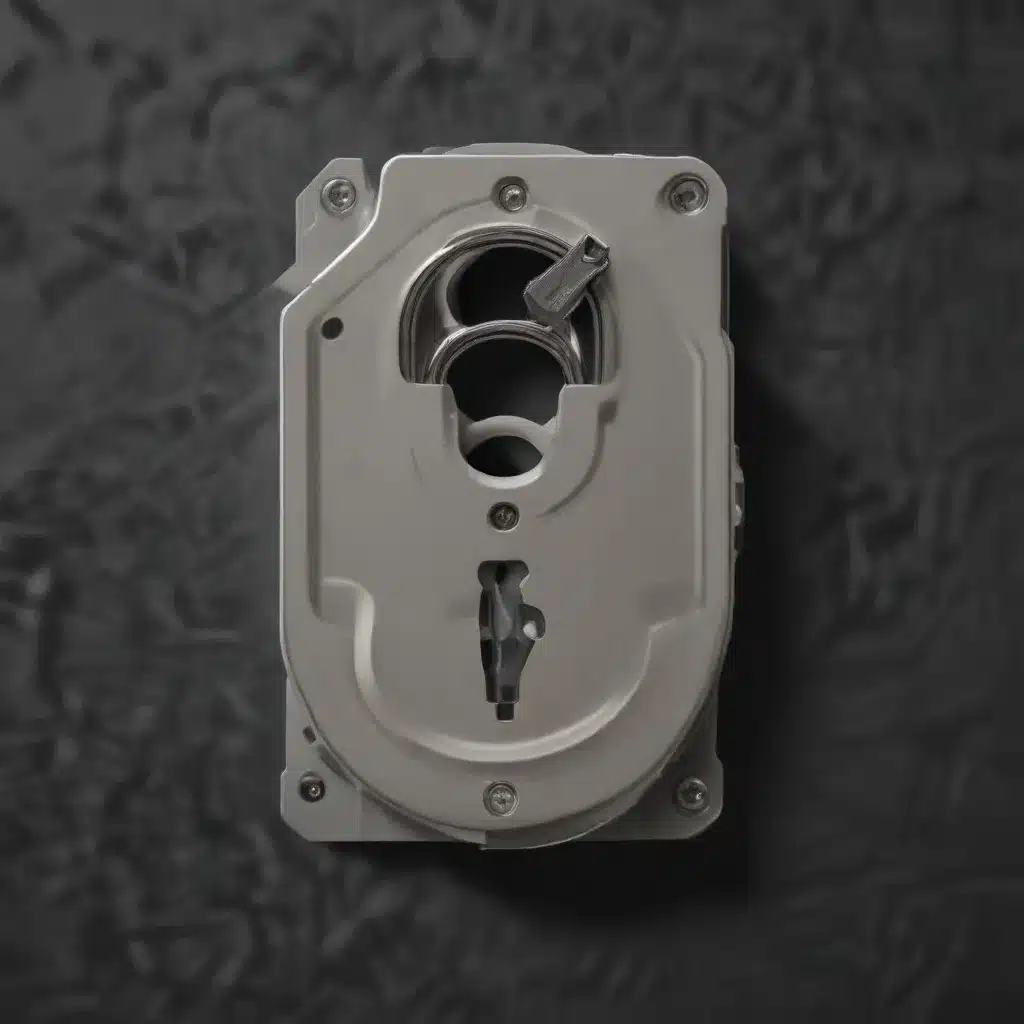
Ensuring Robust Data Protection with BitLocker
In today’s digital landscape, where cybersecurity threats continue to evolve, safeguarding your computer’s data has become increasingly crucial. One of the most effective tools in your arsenal is BitLocker, Microsoft’s built-in full disk encryption solution. By properly configuring and managing BitLocker, you can rest assured that your sensitive information remains secure, even in the event of a lost or stolen device.
Understanding BitLocker’s Encryption Algorithms
The heart of BitLocker’s data protection lies in its encryption algorithms. By default, BitLocker uses the AES (Advanced Encryption Standard) algorithm with a 128-bit key length. However, for optimal security, it is recommended to use the AES algorithm with a 256-bit key length, as it provides stronger encryption. To set this up during your operating system deployment, you can add a simple command-line step to your task sequence:
cmd /c reg.exe add HKLM\SOFTWARE\Policies\Microsoft\FVE /v EncryptionMethod /t REG_DWORD /d 7 /f
This command sets the encryption method to XTS-AES 256, the most secure option currently available in Windows. By ensuring your systems are encrypted with the best available algorithm, you can significantly enhance the overall security of your organization’s data.
Automating BitLocker Key Management with Configuration Manager
Effective management of BitLocker recovery keys is crucial, as these keys provide the means to unlock encrypted drives in the event of lost or forgotten passwords. Configuration Manager’s built-in BitLocker management capabilities offer a seamless way to automate this process, ensuring your recovery keys are securely stored and easily accessible when needed.
To take advantage of this functionality, you’ll need to follow these steps:
-
Enable BitLocker Management in Configuration Manager: In the Configuration Manager console, navigate to the Administration workspace, expand Site Configuration, and select Sites. Right-click your site and select Properties. In the Site Properties window, select the BitLocker tab and enable BitLocker management.
-
Configure BitLocker Management Policies: Under the BitLocker Management node, create one or more policies that define your organization’s BitLocker settings, such as the encryption algorithm, key protectors, and other key management options.
-
Integrate BitLocker Management into Your Task Sequence: During your operating system deployment process, incorporate the necessary steps to enable BitLocker and ensure the recovery keys are properly escrowed to the Configuration Manager database. This can be achieved by including the “Pre-provision BitLocker” and “Enable BitLocker” steps in your task sequence.
By automating the BitLocker key management process, you can streamline your IT operations and reduce the risk of data loss or unauthorized access. Configuration Manager’s BitLocker management capabilities provide a centralized and efficient way to manage encryption across your organization’s devices.
Optimizing Disk Fragmentation for Encrypted Drives
While BitLocker provides robust encryption, it’s essential to also maintain the overall health and performance of your storage devices. One critical aspect of this is managing disk fragmentation, which can have a significant impact on the longevity and responsiveness of both traditional hard disk drives (HDDs) and solid-state drives (SSDs).
Enter O&O Defrag, a powerful disk optimization tool that can help mitigate the effects of fragmentation on your encrypted drives. O&O Defrag’s “BitLocker support with IntensiveOptimize” feature allows you to perform the most thorough optimization, even on BitLocker-encrypted system drives, ensuring your data is neatly organized and accessible.
Furthermore, O&O Defrag’s “VisualDisk” functionality provides valuable insights into the write patterns of your storage media, helping you understand how defragmentation can reduce unnecessary wear and tear, especially on SSDs. By combining the power of BitLocker encryption and O&O Defrag’s optimization capabilities, you can create a robust and high-performing storage environment for your organization’s critical data.
Leveraging Full Flash Update (FFU) for Efficient Deployments
When it comes to deploying Windows 10 and ensuring your devices are properly configured with BitLocker encryption, the Full Flash Update (FFU) image format can be a game-changer. FFU offers several advantages over traditional image formats, such as WIM and VHD, when it comes to rapid and efficient deployments.
One of the key benefits of FFU is its sector-based nature, which allows for faster deployment times compared to file-based formats. Additionally, you can optimize your FFU images to create “portable” versions that can automatically resize the Windows partition to fill the available space on the target device, eliminating the need for manual resizing steps.
To leverage FFU in your deployment process, follow these steps:
- Capture an FFU Image: Use the
dism /capture-ffucommand to create an FFU image of your reference system, ensuring it includes the desired BitLocker configuration. - Optimize the FFU: Utilize the
dism /optimize-ffucommand to create a portable FFU that can automatically adjust the Windows partition size during deployment. - Deploy the Optimized FFU: In your task sequence, incorporate the
dism /apply-ffucommand to apply the optimized FFU image to your target devices, streamlining the deployment process.
By incorporating FFU into your Windows 10 deployment strategy, you can significantly reduce deployment times, ensure consistent BitLocker configurations, and optimize the use of available storage space on your target devices.
Conclusion: Securing Your Data, Boosting Performance
In the ever-evolving landscape of cyber threats, taking a proactive approach to data protection is crucial. By leveraging the powerful combination of BitLocker encryption, Configuration Manager’s BitLocker management capabilities, and optimized disk management with tools like O&O Defrag, you can create a robust and efficient IT infrastructure that safeguards your organization’s sensitive information.
Remember, a well-designed and properly maintained data protection strategy is not just about security – it also contributes to the overall performance and longevity of your devices. By staying on top of disk fragmentation, optimizing your deployment processes, and automating key management tasks, you can ensure your IT systems operate at peak efficiency, ultimately benefiting both your organization’s security and productivity.
For more IT insights and practical technology solutions, visit ITFix.org.uk – your trusted source for expert-driven content to keep your business running smoothly.












